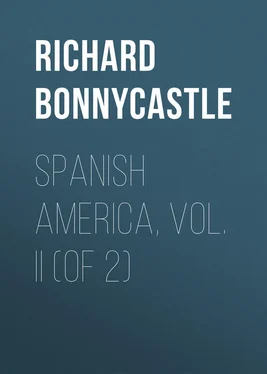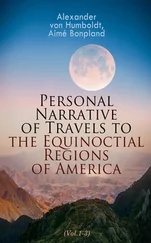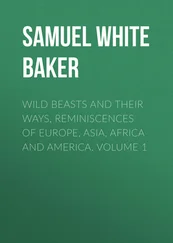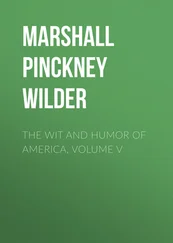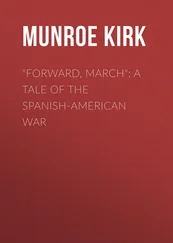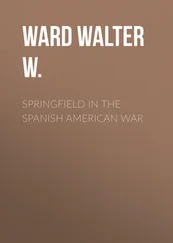Richard Bonnycastle - Spanish America, Vol. II (of 2)
Здесь есть возможность читать онлайн «Richard Bonnycastle - Spanish America, Vol. II (of 2)» — ознакомительный отрывок электронной книги совершенно бесплатно, а после прочтения отрывка купить полную версию. В некоторых случаях можно слушать аудио, скачать через торрент в формате fb2 и присутствует краткое содержание. Жанр: foreign_antique, foreign_prose, на английском языке. Описание произведения, (предисловие) а так же отзывы посетителей доступны на портале библиотеки ЛибКат.
- Название:Spanish America, Vol. II (of 2)
- Автор:
- Жанр:
- Год:неизвестен
- ISBN:нет данных
- Рейтинг книги:4 / 5. Голосов: 1
-
Избранное:Добавить в избранное
- Отзывы:
-
Ваша оценка:
- 80
- 1
- 2
- 3
- 4
- 5
Spanish America, Vol. II (of 2): краткое содержание, описание и аннотация
Предлагаем к чтению аннотацию, описание, краткое содержание или предисловие (зависит от того, что написал сам автор книги «Spanish America, Vol. II (of 2)»). Если вы не нашли необходимую информацию о книге — напишите в комментариях, мы постараемся отыскать её.
Spanish America, Vol. II (of 2) — читать онлайн ознакомительный отрывок
Ниже представлен текст книги, разбитый по страницам. Система сохранения места последней прочитанной страницы, позволяет с удобством читать онлайн бесплатно книгу «Spanish America, Vol. II (of 2)», без необходимости каждый раз заново искать на чём Вы остановились. Поставьте закладку, и сможете в любой момент перейти на страницу, на которой закончили чтение.
Интервал:
Закладка:
The Orinoco, or Oronoco, is not only amongst the largest, but the finest of South American rivers, and is chiefly distinguished by its very singular and intricate course. Its sources are not well known, but according to La Cruz, it rises in a small lake called Ipava, in 5° 5' north-latitude, and thence winding upon itself, enters the lake of Parima to the south-east, and issues by two outlets towards the north and south; on the western shores of the lake; receiving the Guaviara, it bends north, then north-east, and embracing the Meta, the Apura, the Arauca, and the other large streams above-mentioned, with thousands of smaller ones, falls into the Atlantic ocean, by numerous estuaries, opposite the island of Trinidad, its chief mouth being considerably to the south-east of that island. This noble river communicates with the Maranon, and it is supposed, that a stream called the Siaba flows from the south-west of the lake Parima into the Negro, and that to the south-east of the same lake, the Rio Blanco, or Parima, joins the Rio Negro also, this last communicating with the Maranon by means of the Joa Parana.
The river Cassiquiari, long conjectured to be a strong branch of the Orinoco, but now known to be an arm of the Negro, communicates also with the Amazons, its streams having been visited by M. de Humboldt, who encountered great perils in the undertaking, by the force of the current and other obstacles. The whole country for 300 miles was a complete desert, in which the ants and mosquitoes were so exceedingly troublesome as almost to deter the traveller from proceeding. He entered the Orinoco, by the Cassiquiari in 3° 30' north-latitude, and mounted the current of the great river as far as Esmeraldas, the last Spanish settlement in that quarter. The mouths of the Orinoco are very dangerous to navigators; the largest is six leagues in width, and seven of them are navigable for large vessels. The isles formed by these are of very great extent, and are inhabited by the Guaraounos and Mariusos Indians. On the banks of the Orinoco the magnificence of the scenery is beyond description. Forests of the greatest extent are filled with aromatic trees, which diffuse the most delightful odour; birds of every singular variety of beautiful plumage are everywhere observed, and hordes of monkeys follow the astonished traveller. Passing these forests, enormous plains extend their verdant surfaces further than the eye can reach, and the cataracts of the Orinoco give their name to the whole Cordillera, and are represented to be the most tremendous that have ever been observed; but no good description of these falls has yet been given, though they constitute the only outlets from the country situated on the east of the Andes to the vast plains of the Maranon. These cataracts are at Maypura and Atures, two villages in about 6° north-latitude, near the great bend of the river.
The periodical inundation of the Orinoco begins in April and ceases in August; in October the flood is low, arriving at its shallowest point in February; the rise is equal to thirteen fathoms at the distance of ninety leagues from the ocean. The mouth of the great estuary is in 8° 30' north-latitude, and 59° 50' west longitude.
The caymans, or alligators, are very numerous, and very formidable throughout its whole length, which may be estimated at about 1250 miles.
Indians. – On the banks of the Orinoco the Indian tribes are not numerous, consisting only of from 500 to 2000 warriors each; of these, the Caribs are the most powerful as well as the most formidable. The Otomacs follow them, and all are nearly in the same state of nature. In this part of the Caraccas, the total number of the natives cannot be accurately ascertained; but in the province of New Andalusia, they amount to 24,000, and in the two provinces of Barcelona and Cumana to 60,000. In Cumana they live almost wholly under the missionaries in little towns or amongst the Europeans, each mission containing about five or six hundred. In the province of Barcelona, the Indian villages contain from two to even three thousand inhabitants. The Guaraounoes , who inhabit the islands of the Orinoco, are independent of the Spaniards, and amount to about six thousand.
To the north of the Orinoco, there are few natives in a state of absolute barbarism; it is only to the south of this river that the efforts of missionaries have been ineffectual.
The provinces of New Andalusia and Barcelona contain fourteen tribes, the Chaymas , Guayquerias , Pariagotoes , Quaquas , Araucas , Caribbees , Guaraounoes , Cumanagotoes , Palenkas , Piritoos , Tomoozas , Topocuares , Chacopatas , and Guarivas.
The Guayquerias , who are civilized Indians residing at Cumana and Araya, amount to 2000.
The Chaymas, the Caribs of the Savannahs, and the Cumanagotoes, are the most numerous. A few, and only a few, of the savages of the islands of the Orinoco, who build their huts on trees, have been formed into missions on the left bank of the Orinoco. These four last possess languages which are the most universal in this part of the world, the Cumanogoto language prevailing in the western part of the captain-generalship, and the Caribbean and Chayman in the southern and eastern districts.
The missions are not always formed of the same tribe, but often consist of families of different nations, speaking different languages; they all cultivate the land, their huts are all erected in the same style, and they have all a common field for the uses of the community, and are governed by fixed laws; the magistrates are chosen from among themselves, and each village is superintended in its religious and civil affairs by a monk.
The Chaymas were reduced to subjection in the seventeenth century, by Francisco of Pamplona, a monk who had been the captain of a ship; and the oldest mission bears its date from 1660. Of these there are at present twenty-five, containing 15,000 souls. They suffered much from 1681 to 1720 from the Caribs, who burnt the settlements.
In stature, the natives of this tribe are short, being not more than five feet two inches, their body thick, with broad shoulders and flat chest, their colour a dull brown, and they are of a melancholic temperament.
They have a great aversion to European clothing, and remain naked whilst in their houses, but when obliged to go out, they put on a vest with sleeves, which reaches almost to the knees; the women wear this habit without the sleeves, and both sexes use a narrow bandage tied round the loins: they also carefully eradicate the hair from the chin, and are a neat people, keeping their persons, houses and utensils very clean.
Their language, as well as those of the Caribs and Cumanagotoes, has each had a dictionary composed for the use of the missionaries; no word begins with l , and it is destitute of f , b and d .
The Pariagotoes are mixed with the Chaymas, in the missions; and exist in the villages on the banks of the Caroni. They speak a language peculiar to themselves.
The Guaraounoes build their huts on the trunks of the mangrove and palm trees, to raise them above the waters in the great inundations of the Orinoco; as we before observed, they are independent, with the exception of a very few, who have been converted by the monks. Sir Walter Raleigh describes them under the names of Aroottes, Trititivas and Warawites. They make their bread of the flour extracted from the palm tree, which they cut down for this purpose, just previous to the appearance of the flowers.
Five or six hundred of this race quitted the islands a short time ago, and formed two villages on the north and south banks of the great river, twenty-five leagues distant from the sea, where they live independent of the missionaries. They are of a middle size, and very strong, and are able to run on the mud of the marshes, where no other Indians can walk. These people are the pilots of the Orinoco, possessing a perfect knowledge of its navigation, and are concerned in the clandestine commerce carried on from Trinidad.
Читать дальшеИнтервал:
Закладка:
Похожие книги на «Spanish America, Vol. II (of 2)»
Представляем Вашему вниманию похожие книги на «Spanish America, Vol. II (of 2)» списком для выбора. Мы отобрали схожую по названию и смыслу литературу в надежде предоставить читателям больше вариантов отыскать новые, интересные, ещё непрочитанные произведения.
Обсуждение, отзывы о книге «Spanish America, Vol. II (of 2)» и просто собственные мнения читателей. Оставьте ваши комментарии, напишите, что Вы думаете о произведении, его смысле или главных героях. Укажите что конкретно понравилось, а что нет, и почему Вы так считаете.
